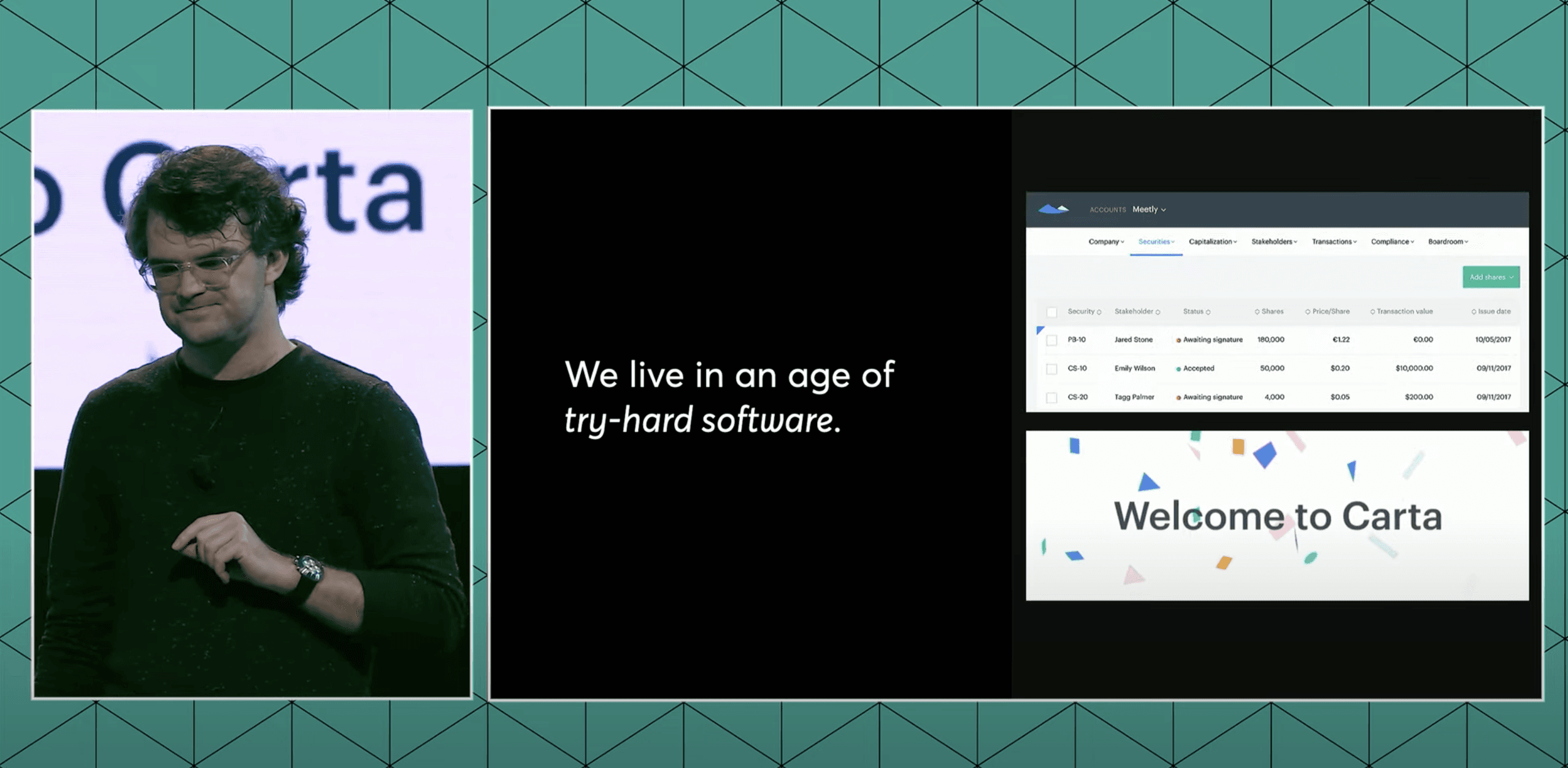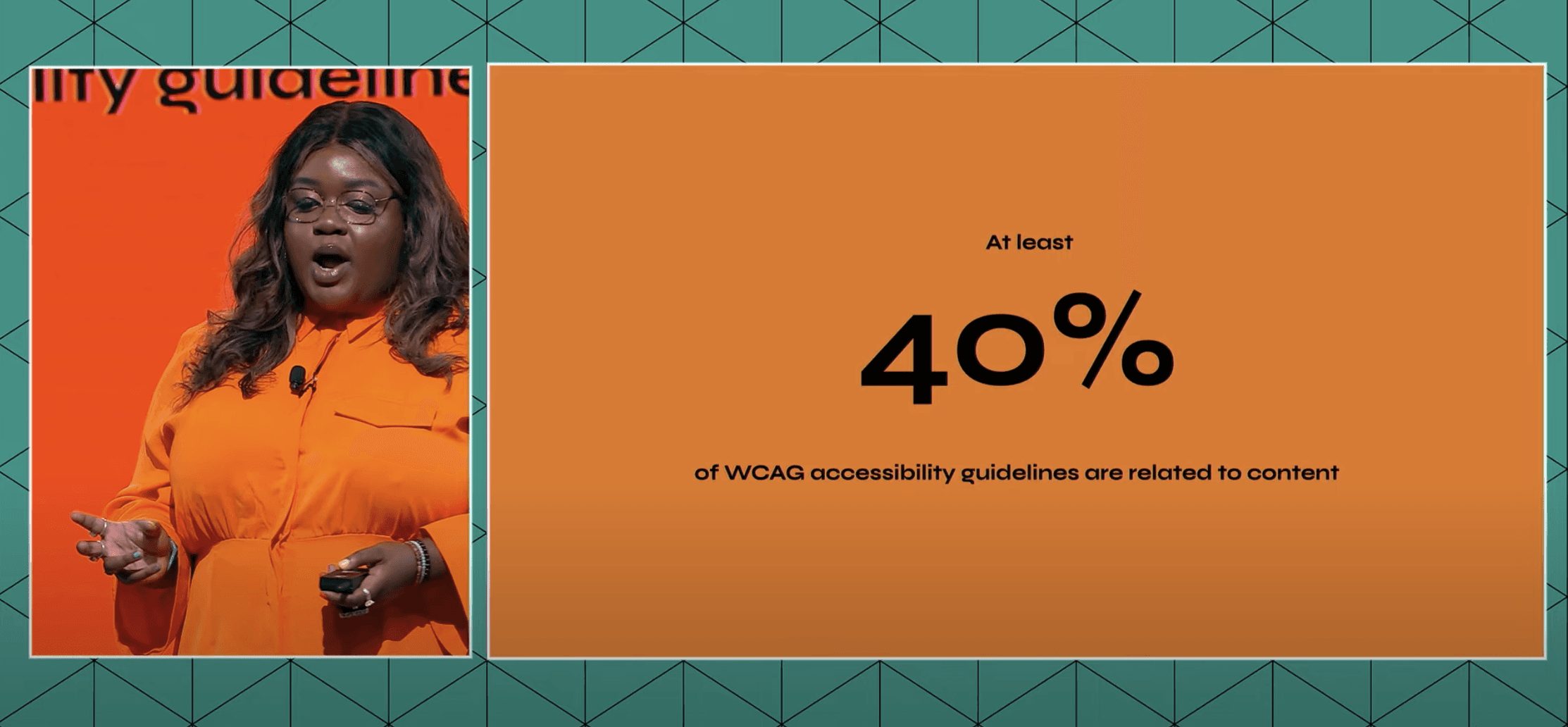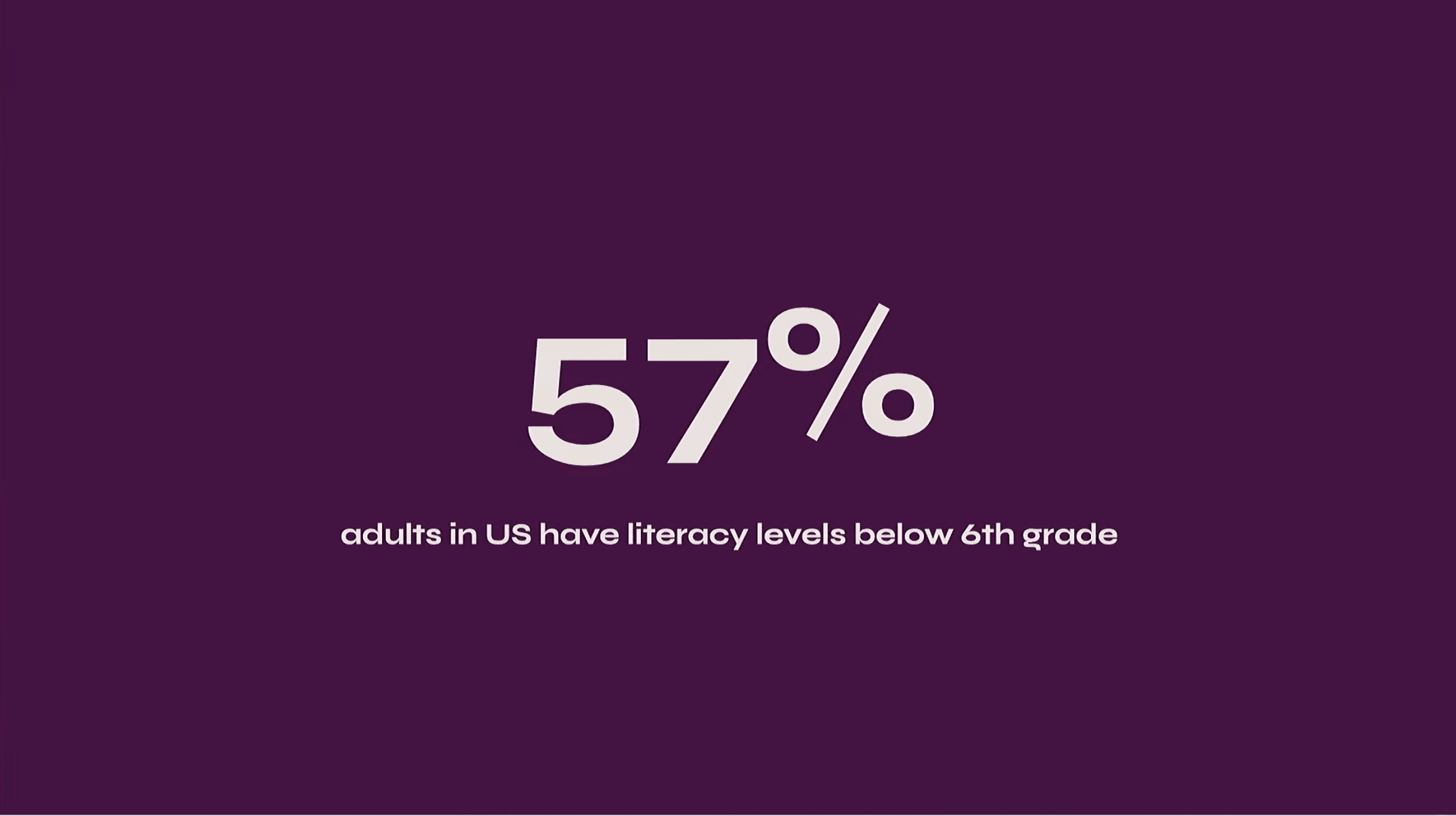Events
Content design takeaways from Config 2023
Insights from the content design talks at Config 2023.
Jul 7, 2023
By Andrew Webb
Config has come and gone, but two talks stood out to the writers in the crowd. Those talks were about content design in the world of UX.
There were only three speakers this year, unfortunately. I did expect more, since Figma has obviously benefitted from content design recently:

Still, those speakers did a wonderful job, and I’ve been thinking about their words a lot in the week since.
Here’s what resonated with me.
Including content designers early makes products better (surprise!)
Ryan Reid took the stage to show us a snapshot of his time at Eats, explaining how he learned to get involved in the design process early. This enabled him to break out of the content designer’s most common struggle: to contribute like a partner instead of being treated like a last-mile checkbox.
He did it by contributing a brand-new design for the company’s cancellation experience. How did he do that when product designers so often leave content designers out of the conversation, though?
He took the initiative. Instead of creating mountains of project documentation to demonstrate a high output, he started doing what so many content professionals fear…
He started exercising his layout design skills.
In his own words, he sketched a new idea on a napkin. The idea was to serve up a small collection of modular content blocks dynamically, empowering the Eats app to:
Offer discounts more reliably
Manage content more easily
Retain more customers
And it worked.
Ryan's talk starts at 3:57.
It was an inspiring story. Content designers watching were probably nodding along, thinking, “Yeah, that makes sense. The information flow in that experience was a clear improvement.”
There’s a more important lesson for us here, though: content designers need to engage in visual exercises to communicate their ideas better. It sounds counter-intuitive, though. Why would you hire writers to play around with UI elements?
Because shaping the flow of information and content directed the entire design process for the better. In this example, it empowered Eats to serve 30 different markets with a single cancellation experience.
That’s a clear-cut case of content design empowering products to scale further.
“The difference between low and high fidelity later in the process isn’t that big…the difference is negligible and the doodling is easier.”
The takeaway for product teams: shaping the flow of information at the beginning of the process makes the whole experience that much better.

The takeaway for content designers: we need to speak to our product partners in their own language, not just in longform text. Let’s start embracing the conceptual and lo-fi work, even if we’re uncomfortable with it at first.
And you know what? Ryan’s approach works.I tried it the following week for an AI-related design, and it worked like a charm. That design is now being put forward for the prototype.
Content designers are also your emotion designers
“We live in an era of try-hard software.”
Andrew Schmidt kicked off his talk with a bold claim backed by serious industry experience: throwing confetti animations at every completed workflow isn’t “delight,” and it isn’t emotionally intelligent.
It’s just cheap.
Emotional intelligence is an important part of good products, and these days, it’s missing from most of them.
Schmidt’s main point was to start with some try-hard examples and ladder up to a more human definition of “good software.” I loved it, but his initial point about losing that genuine spark gnawed at me.
Someone needs to fix that, right?
Andrew's talk starts at 26:00.
As I look at the R&D team around me, I don’t see any other roles primed to bring back that magic into our digital products.
Interaction designers don’t want to do it.
Engineers definitely don’t want to do it.
Graphic designers would help, but they’re rare on product teams.
Who’s left?
It’s the content designers. Nobody else is interested in reigniting that spark in our everyday tools. More important—and perhaps contrarian—is that nobody else is more qualified to do it.
Here’s my case: content designers use language to get their audience to feel a certain way and to take certain actions. There’s another role that does those things in another context, though.
Enter the copywriter. I know, I know…
“Surely he doesn’t mean that content designers have anything to do with marketing.” UXers, please un-clutch your pearls and listen to some practical wisdom.
Copywriting is the time-honoured discipline that tugs on an audience’s emotions to:
Create bonds of affinity
Drive action
Sound familiar? UX writing can and does do that, too. It’s just done in the name of usability instead of marketing—but both power a product’s brand and growth. That is where content designers need to learn into their copywriting skills to accomplish this.

Every content designer has some practice in copywriting, anyway. There isn’t a professional writer alive who hasn’t been tapped on the shoulder to spruce up a headline or to turn a clever phrase.
It’s a statistical certainty.
And that’s a good thing. It means that content designers can lean into those copywriting skills to put emotional intelligence back in our products without cheapening them, and, more importantly, without stretching the hiring budget.
The takeaway for product teams: you’re getting a damn good deal when you hire a content designer. Use them to get a two-for-one deal on talent.
The takeaway for content designers: put the pathos back into your products (intelligently) to make your users love your product again.
Accessible products need content designers
A gem from Candi Williams' talk was this number: 40% of WCAG accessibility guidelines are related to content. That’s nearly half.

I’m surprised it isn’t higher, honestly. According to the WCAG Digital Accessibility Foundations course, the most common assistive technologies require text to work.
Those would include:
Text-to-speech
Screen readers
Digital braille displays
Content designers are the most qualified professionals to tackle those language-based challenges, by far.
If your business wants—or needs—to make its product accessible then you need content designers to craft universally accessible experiences through language.
There’s more to it than that, though.
Candi also made the excellent point that 57% of adults in the United States have literacy levels below the 6th grade (54%, according to Gallup). We have a similar issue north of the 49th parallel: about half of Canadian adults can’t pass highschool-level literacy tests, according to the CBC.

By extension, many users in North America probably feel frustrated or even alienated by these common product problems:
Technical speak
Business jargon
Plain old bad writing
This likely means that the average user actually needs carefully designed content to use a product to its full extent (read: being willing to pay for it). Professional content isn’t just “nice to have.” It’s part and parcel of product performance, which drives revenue.
The takeaway for product teams: professionally written and inclusive content lets you keep more users. You do want more users, right?
The takeaway for content designers: bang the drum on accessibility. It’s the right thing to do. Just remember to appeal to the decision-maker’s business sense when making a case for it, too.
Check out Candi's full talk here. It starts to get at the business value of content design.
That’s it for content design at Config 2023! This year we’ve seen strong cases for content powering digital products through accessibility, emotional intelligence, and early-stage conceptualization. All of this makes products—and businesses—more effective. I hope more brands wake up to this view.
I can’t wait to see how the discipline will move forward next year. Until then, folks!
stay in the loop


